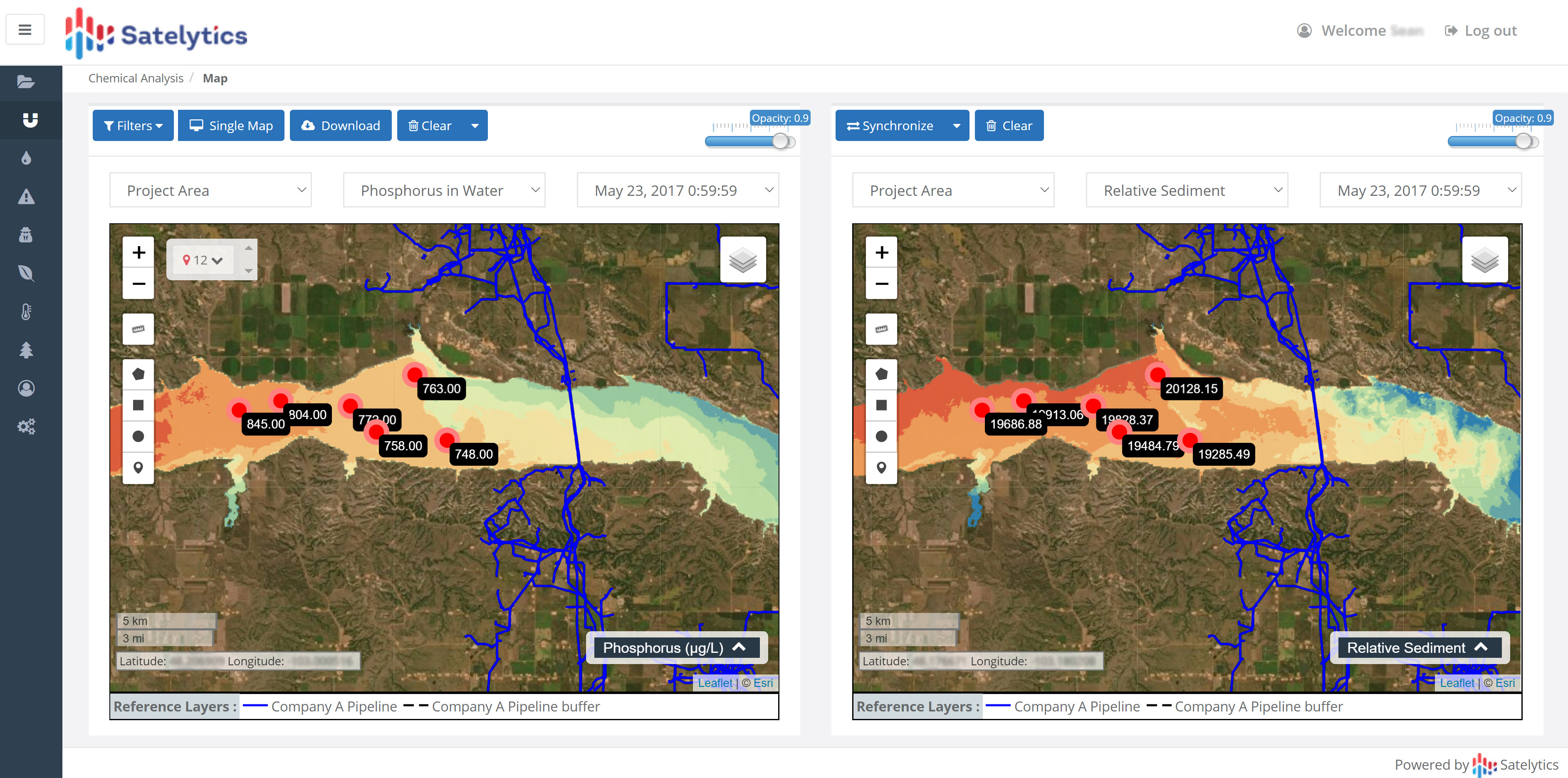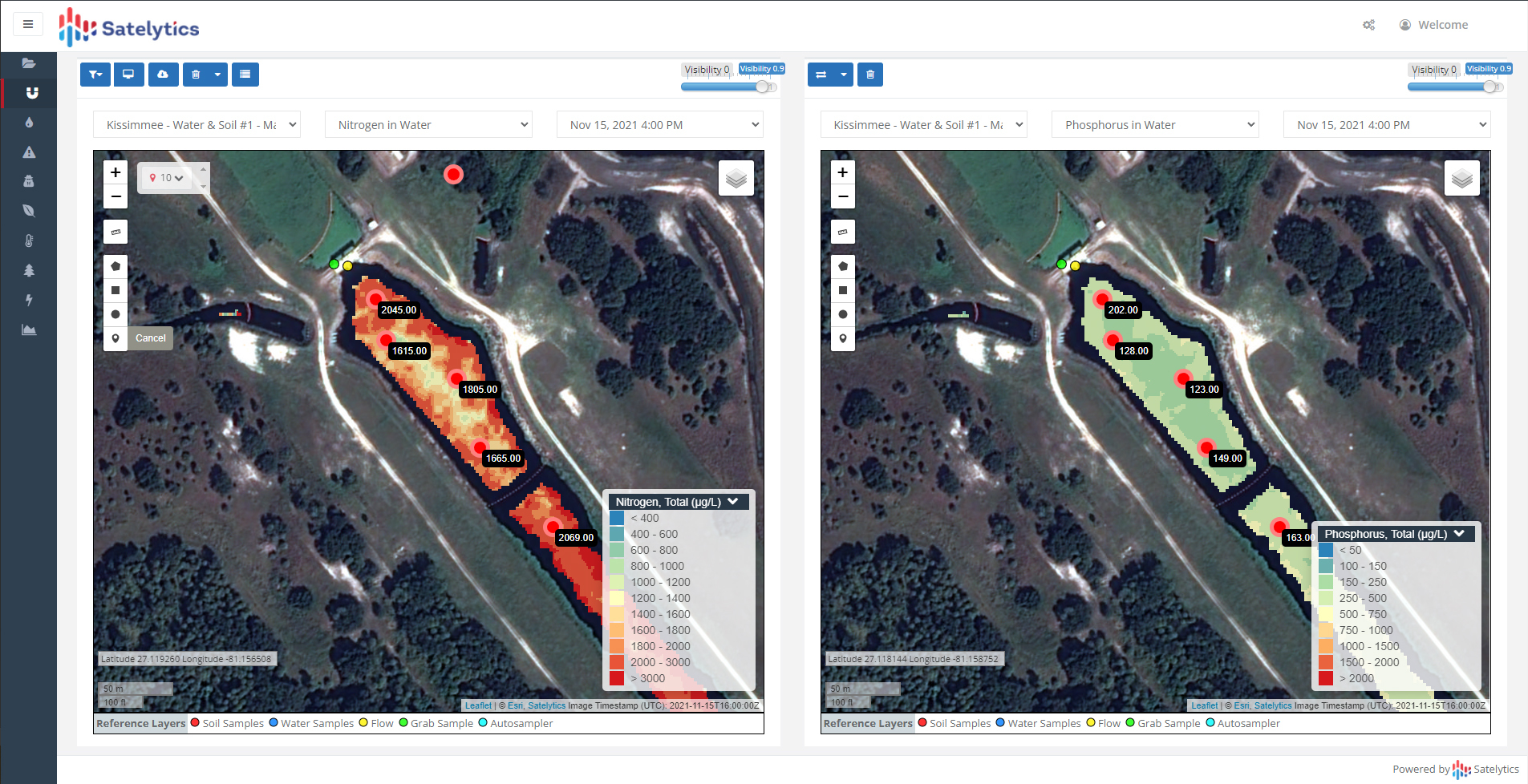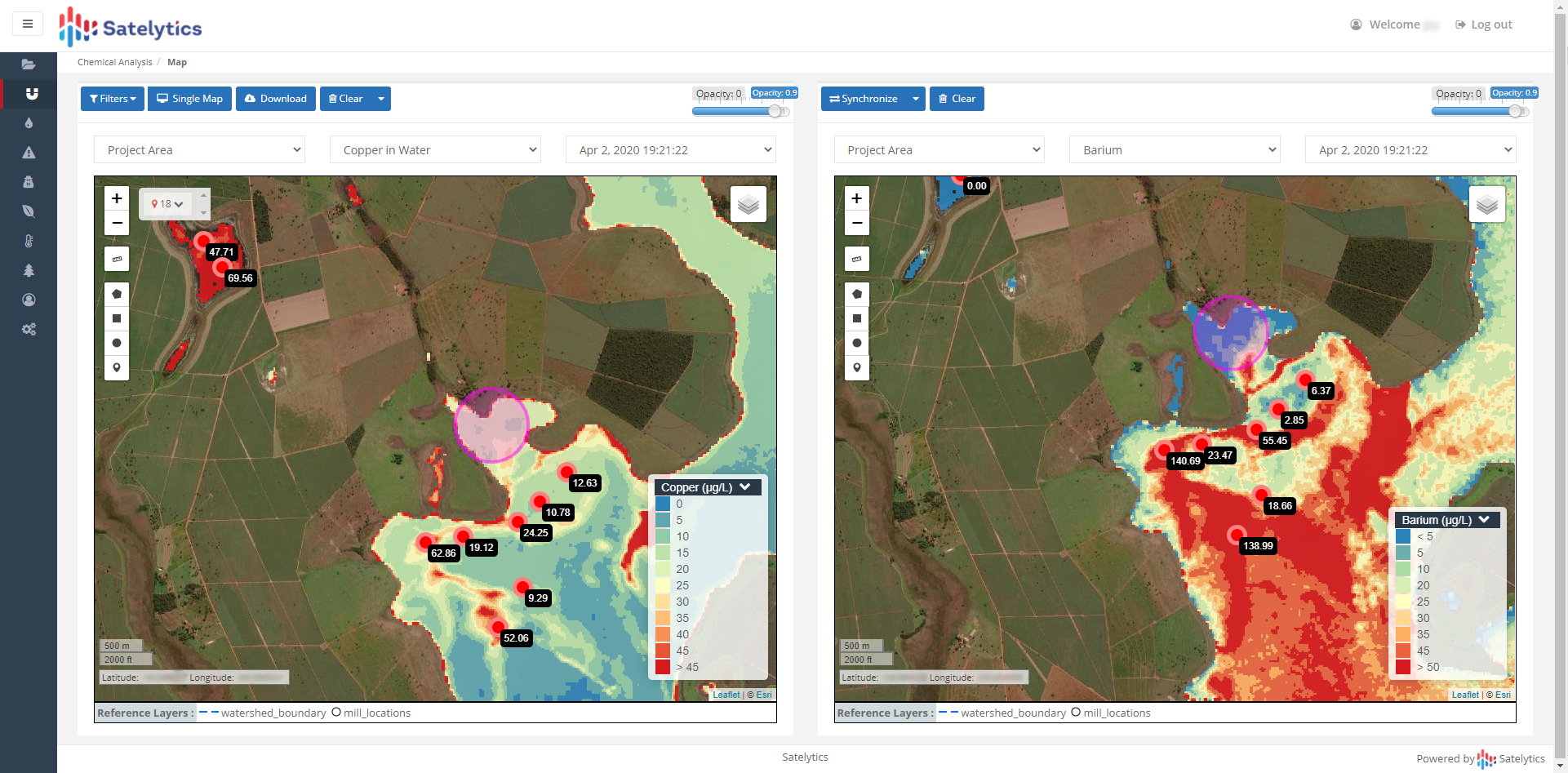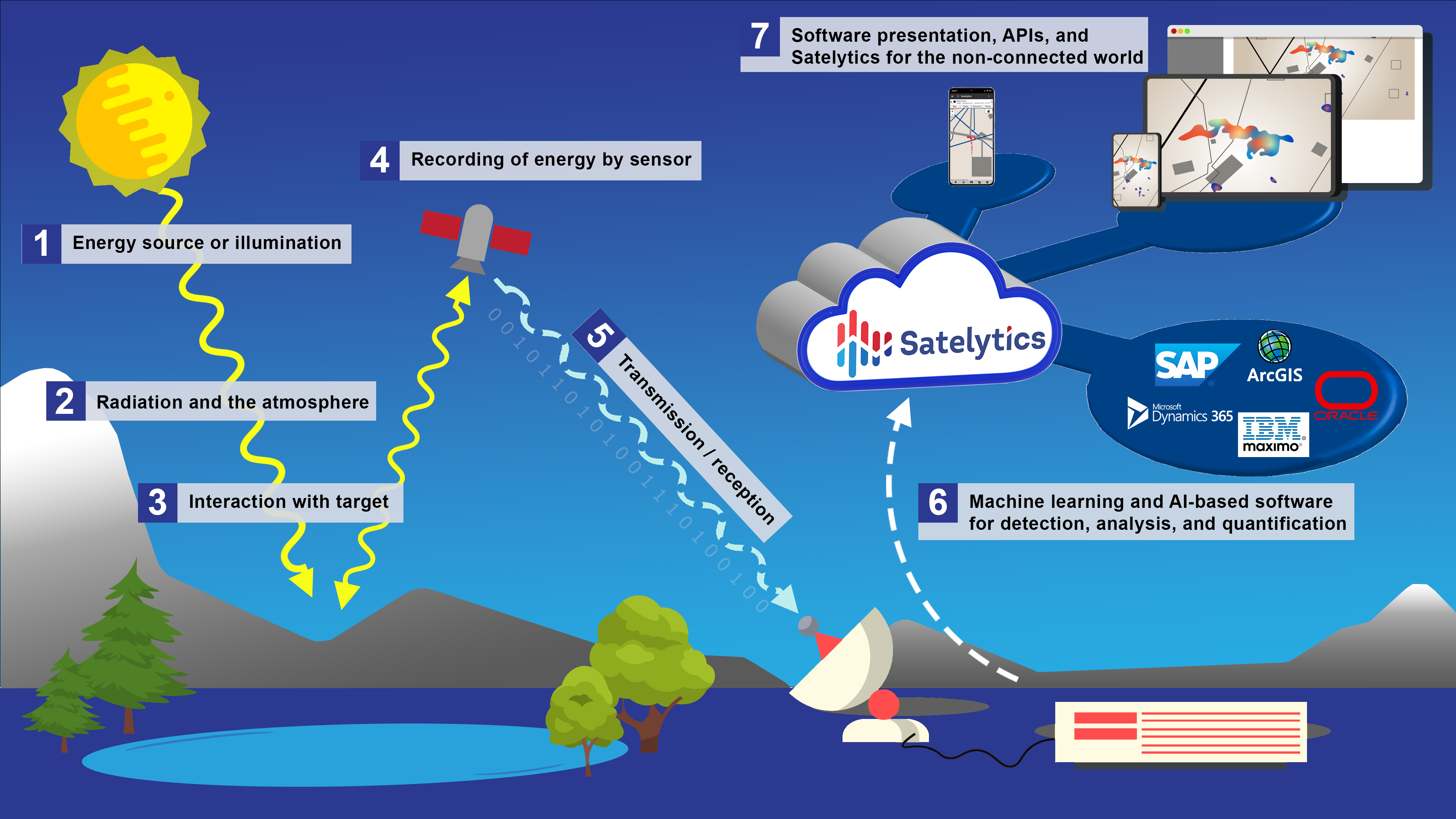
• Water & Wastewater

• Water & Wastewater
Satelytics is being used to pinpoint sources of contamination in large watersheds, streams, rivers, and lakes. By analyzing commercially available satellite imagery, our Constant Vigilance™ algorithms identify unique spectral bands and their intensity to detect and quantify contaminants.
Phosphorous. Our first algorithm, developed years ago, continues to help watershed managers identify point and non-point sources of phosphorous. Examples include leaky septic systems and agricultural residue, which may be lower in concentration but covers a broader area adjacent to a waterbody. These nutrients will remain in the soil until rain flushes the nutrient into the waterbody, where it causes problems. All Satelytics’ water quality algorithms, including phosphorous, quantify concentrations in parts per billion.

Nitrogen. Last year, we developed an algorithm for total nitrogen in partnership with a large watershed-managing customer. Nitrogen application is prevalent on lawns, fields, and golf courses, which can cause headaches for watershed managers.

Metals. Satelytics also quantifies various metals, which cause their own set of challenges. These metals also serve as surrogates, indicating other unwanted phenomena. Satelytics detects and measures arsenic, barium, copper, iron, and manganese. We are also developing potassium, sulfate, chloride, calcium, and sodium algorithms.

Satellites can gather data from areas as small as 100 km2 and as large as thousands of square kilometers in a few minutes. This capability allows Satelytics to detect and measure nutrient loading and analyze the surrounding area to find the source. Satelytics analyzes the data and delivers actionable alerts in a few hours, allowing watershed managers to immediately begin specific remediation efforts.

Look for our next article in this series, where we’ll review biological constituents Satelytics can quantify. In the meantime, please take a look at short video demonstrations of these capabilities at https://vimeo.com/showcase/8818539.